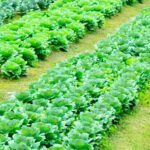Are you looking to start your own back yard vegetable garden? The trend of back yard gardening is steadily growing as more people realize the numerous benefits of growing their own vegetables at home.
Whether you have a small urban backyard or a spacious suburban lawn, you can enjoy the satisfaction of harvesting and enjoying your homegrown produce. This article will guide you through the process of selecting the right vegetables for your back yard, planning and preparing your garden, caring for your plants, and maximizing space in a small back yard.
One of the most rewarding aspects of back yard gardening is being able to grow your own fresh and organic vegetables right outside your door. Not only does it provide a convenient and sustainable source of food, but it also allows you to take control over what goes into your produce. By incorporating principles of eco-friendly practices, such as composting and biodiversity, you can create a more sustainable back yard garden that benefits both you and the environment.
When deciding which vegetables to grow in your back yard garden, there are several factors to consider such as available space, climate, and growing season. With careful selection and planning, even those with limited space can successfully grow a variety of vegetables using vertical gardening techniques or companion planting methods.
Additionally, by understanding how to deal with common issues like pests, diseases, and unpredictable weather conditions, you can ensure a bountiful harvest from your vegetable garden. So let’s dig in (literally) to explore the world of back yard vegetable gardening.
Selecting the Right Vegetables for Your Back Yard
When it comes to selecting the right vegetables for your back yard, it’s important to consider the size of your space and the climate of your region. Not all vegetables thrive in small spaces, so choosing varieties that are well-suited for container gardening or compact gardens is essential. Additionally, understanding the growing season in your area will help you select vegetables that will flourish and produce a bountiful harvest.
Tips for Choosing Vegetables That Thrive in Small Spaces
When space is limited, it’s important to choose vegetables that are well-suited for smaller areas. Look for compact or dwarf varieties of popular vegetables such as tomatoes, peppers, and cucumbers. Additionally, leafy greens like lettuce and spinach are great options for back yard gardening as they can be grown closely together and don’t require a lot of space to flourish.
Considerations for Climate and Growing Season
Before selecting which vegetables to grow in your back yard garden, take into account the climate and growing season of your region. Certain vegetables require specific temperature ranges and sunlight exposure to thrive. For example, heat-loving plants like tomatoes and peppers need plenty of sun, while cool-season crops such as broccoli and kale prefer cooler temperatures. Be sure to choose vegetables that are well-suited for the conditions in your area to ensure a successful harvest.
By carefully selecting the right vegetables based on space constraints and climate considerations, you can set yourself up for a successful back yard gardening experience. With the proper planning and selection of vegetable varieties, you’ll be on your way to enjoying an abundant harvest of homegrown produce right from your own back yard.
Planning and Preparing Your Back Yard Garden
When it comes to vegetables back yard gardening, proper planning and preparation are essential for a successful harvest. Before breaking ground, take the time to design your garden layout. Consider the space available and choose a spot in your back yard that receives adequate sunlight for vegetable growth. Keep in mind the mature size of the plants you intend to grow, as well as any trellises or supports they may require.
In addition to layout, soil preparation is crucial for healthy vegetable growth. Test your soil to determine its composition and pH level, and make amendments as necessary. Many vegetables thrive in well-draining soil with rich organic matter. Compost can be an excellent way to improve soil fertility and structure, so consider starting a compost pile or using store-bought compost to enrich your garden beds.
Once you have designed your garden layout and prepared the soil, you will be ready to start planting your vegetables back yard gardening. Whether you choose to start from seeds or use transplants is up to you, but be sure to follow planting guidelines for each vegetable variety.
Watering, fertilizing, and pest control are important aspects of caring for your vegetable garden as well. By taking the time to plan and prepare before planting, you can set yourself up for a bountiful harvest of homegrown vegetables right in your own back yard.
Planting and Caring for Your Vegetable Garden
When it comes to planting and caring for your vegetable garden, there are several key tips to keep in mind to ensure a successful harvest. Whether you are starting from seeds or using transplants, it’s essential to provide the right care for your plants as they grow. Proper watering, fertilizing, and pest control are all important aspects of maintaining a healthy vegetable garden.
Watering your vegetables is crucial for their growth and overall health. Different types of vegetables have varying water needs, so it’s important to research the specific requirements for the crops you are growing. In general, most vegetables require about 1-2 inches of water per week. This can come from rainfall or manual watering if needed. Mulching around your plants can also help retain moisture in the soil and reduce the frequency of watering.
In addition to proper watering, fertilizing your vegetable garden is essential for promoting healthy plant growth and abundant yields. Organic matter such as compost or well-rotted manure can be added to the soil before planting to provide essential nutrients. Additionally, consider using organic fertilizers throughout the growing season to supplement any deficiencies in the soil. Lastly, implementing natural pest control methods such as companion planting can help manage pests without the use of harmful chemicals.
| Planting and Caring Tips | Key Information |
|---|---|
| Watering | About 1-2 inches of water per week is generally needed for most vegetables. |
| Fertilizing | Add organic matter before planting and use organic fertilizers throughout the growing season. |
| Pest Control | Companion planting can help manage pests naturally without harmful chemicals. |
Maximizing Space in a Small Back Yard
When it comes to back yard gardening, space can often be a limiting factor, especially in urban or suburban areas. However, there are many creative ways to make the most of your limited space and still grow a bountiful vegetable garden.
One popular method is vertical gardening, which involves growing plants upward on walls or trellises instead of outward along the ground. This allows you to utilize otherwise unused space and grow a wide variety of vegetables such as tomatoes, cucumbers, and even certain types of squash.
Another strategy for maximizing space in a small back yard is companion planting. By pairing compatible plants together, you can maximize the use of your garden area and naturally control pests. For example, planting basil next to tomatoes can enhance the flavor of the tomatoes while also repelling insects that are harmful to the tomato plants.
In addition to vertical gardening and companion planting, small back yard gardeners can also make use of container gardening to save space. Many vegetables can thrive in containers, including lettuce, peppers, and beans. Utilizing hanging baskets or tiered plant stands can further optimize vertical space while adding aesthetic appeal to your garden.
| Vegetable | Suitable for Vertical Gardening |
|---|---|
| Tomatoes | Yes |
| Cucumbers | Yes |
| Basil | No (but good for companion planting) |
Harvesting and Enjoying Your Homegrown Vegetables
Once you have diligently tended to your back yard vegetable garden, the time will come to reap the rewards of your hard work. Here are some guidelines for harvesting and savoring your homegrown vegetables:
– When to harvest different vegetables:
Knowing when to harvest your vegetables is crucial for enjoying them at their best. Here are some general guidelines for popular homegrown veggies:
1. Tomatoes: Harvest when they are firm, fully colored, and have a slight give when gently squeezed.
2. Lettuce: Pick outer leaves when they reach a desirable size, or cut the entire plant down to 2 inches above ground level.
3. Zucchini: Harvest when they reach 6-8 inches in length and still feel tender.
Delicious recipes to feature your garden produce:
Now that you have an abundance of fresh vegetables from your back yard garden, it’s time to put them to use in delectable dishes. Consider trying out these mouthwatering recipes that showcase the flavors of homegrown produce:
By following these tips for harvesting and enjoying your homegrown vegetables, you can fully appreciate the fruits of your labor in back yard gardening. Don’t let all of that nutritious produce go to waste – make the most out of each vegetable by experimenting with different recipes and savoring every bite.
Remember that cultivating a back yard garden will not only improve access to fresh produce but enable you to enjoy a satisfying sense of accomplishment once it is time for harvesting. Share your delicious food experiences with family and friends who helped make this possible through their support or participation in growing their own garden too.
Troubleshooting Common Back Yard Vegetable Garden Issues
One of the most common issues that back yard gardeners face is dealing with pests and diseases that can damage their vegetable crops. It’s important to regularly inspect your plants for any signs of infestation or illness, such as holes in the leaves, yellowing or wilting, and unusual spots or discoloration.
When it comes to pests, natural solutions like introducing beneficial insects, using organic pest control products, or even handpicking larger pests can help keep them at bay. For diseases, proper sanitation and crop rotation can prevent the spread of infections among your plants.
Tips for Managing Unpredictable Weather Conditions
Weather can be unpredictable, and extreme conditions like heavy rain, drought, or unseasonable temperature changes can impact the health of your vegetable garden. To mitigate the effects of unpredictable weather, providing adequate drainage in your garden beds can prevent waterlogged soil during heavy rainfall. Installing shade cloths or using mulch can protect delicate plants from intense heat. Additionally, staying informed about local weather patterns and being prepared to take protective measures when necessary is key to managing these challenges.
Seeking Professional Assistance
If you’re faced with persistent issues in your back yard vegetable garden that you can’t seem to resolve on your own, don’t hesitate to seek professional assistance. Local gardening centers or agricultural extension services often offer resources and expertise in diagnosing and addressing plant problems.
Sometimes a fresh perspective from an experienced gardener can provide valuable insights and solutions that may not have occurred to you. Don’t be afraid to ask for help when it comes to troubleshooting issues in your beloved vegetable garden.
By effectively tackling common back yard vegetable garden issues such as pests, diseases, and unpredictable weather conditions – as well as seeking professional assistance when needed – you’ll be better equipped to maintain a healthy and thriving vegetable garden in your own backyard.
Creating a Sustainable Back Yard Garden
As more people become interested in vegetables back yard gardening, creating a sustainable garden becomes an important consideration. Not only does sustainable gardening benefit the environment, but it also helps to maintain the long-term health and productivity of your back yard garden. One of the key practices in sustainable gardening is composting. By recycling organic waste from your kitchen and yard, you can create nutrient-rich soil amendments that will benefit your vegetable plants.
In addition to composting, there are other eco-friendly practices that can contribute to a sustainable back yard garden. For example, using natural pest control methods such as introducing beneficial insects or planting companion plants that repel pests can help reduce the need for harmful chemical pesticides. Furthermore, practicing water conservation techniques like mulching and using drip irrigation systems can minimize water waste and promote efficient use of resources.
It’s also important to consider the concept of biodiversity in back yard gardening. By incorporating diverse plant species into your garden, you can create a balanced ecosystem that is more resilient against pests and diseases.
This can be achieved by growing a variety of vegetables, herbs, and flowers, as well as providing habitats for beneficial wildlife such as bees and butterflies. Ultimately, creating a sustainable back yard garden not only benefits the environment but also contributes to the overall success and longevity of your vegetable garden.
Conclusion
In conclusion, back yard gardening offers a multitude of benefits and rewards to those willing to put in the time and effort. The satisfaction of growing your own vegetables is unmatched, from the joy of watching seeds sprout to the fulfillment of harvesting and enjoying the fruits of your labor. Not only does back yard gardening provide a source of fresh, organic produce, but it also promotes sustainability and self-sufficiency.
For those considering starting their own vegetable garden, it’s important to remember that selecting the right vegetables for your space and climate is crucial. By planning and preparing your garden properly, you can ensure healthy growth and bountiful harvests. Maximizing space through vertical gardening and companion planting allows for efficient use of limited back yard space, while also providing natural pest control.
As you embark on your back yard gardening journey, remember that challenges such as pests, diseases, and unpredictable weather may arise. However, with proper care and attention, these issues can be managed effectively. Through composting and other eco-friendly practices, you can create a sustainable back yard garden that not only benefits you but also contributes positively to the environment.
The satisfaction of growing your own vegetables is truly something special and worth pursuing for anyone with even a small amount of space to spare. So why not give it a try? Start your own vegetable garden today.
Frequently Asked Questions
What Vegetables Can You Grow in a Backyard Garden?
In a backyard garden, you can grow a variety of vegetables such as tomatoes, peppers, cucumbers, lettuce, spinach, carrots, radishes, and herbs like basil and parsley. The key is to consider the climate, soil quality, and sunlight exposure in your specific location.
How Do You Layout a Backyard Vegetable Garden?
When laying out a backyard vegetable garden, it’s important to consider the amount of space available, the type of vegetables you want to grow, and how much sunlight they need. You’ll also want to plan for easy access to water sources and leave enough space between rows for weeding and harvesting.
How Do I Start a Backyard Vegetable Garden?
To start a backyard vegetable garden, begin by choosing a suitable location with good sunlight exposure and well-draining soil. Prepare the soil by tilling it and adding organic matter like compost or aged manure.
Then decide what vegetables you want to grow based on your local climate and plant them according to their specific spacing and depth requirements. Proper watering and regular maintenance will help your garden thrive.

If you’re looking to get into vegetable gardening, or are just looking for some tips on how to make your current garden better, then you’ve come to the right place! My name is Ethel and I have been gardening for years. In this blog, I’m going to share with you some of my best tips on how to create a successful vegetable garden.





